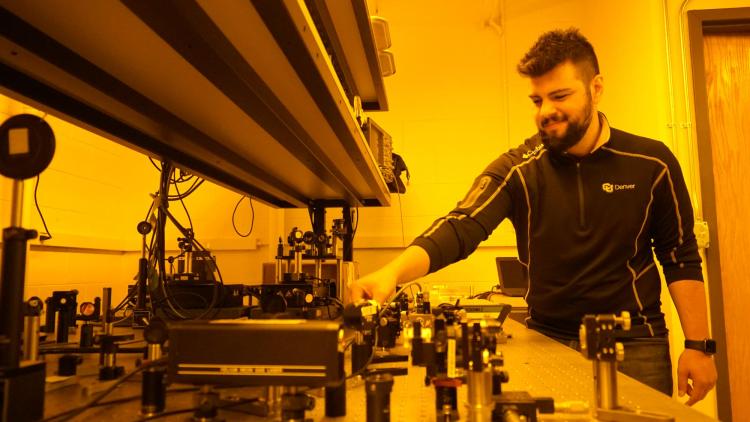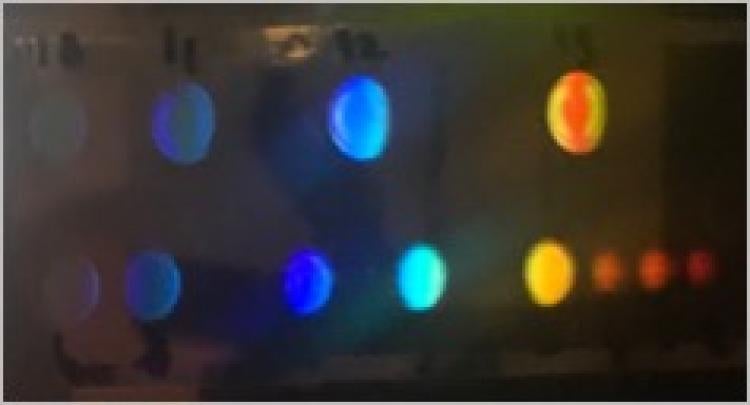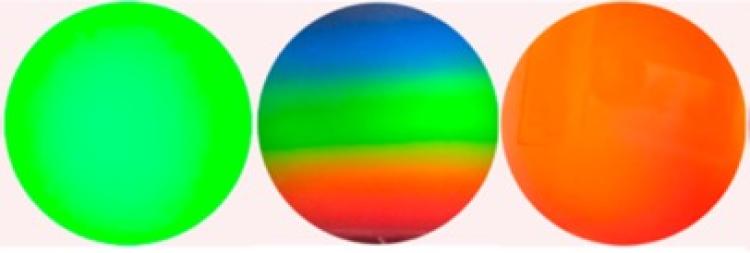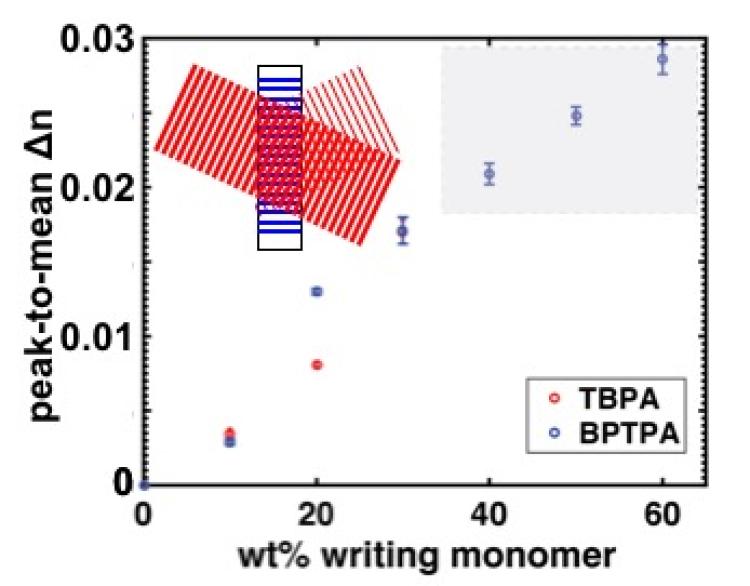Holographic Photopolymers
Diffusive photopolymers were first developed by Bruce Booth at Dupont for holography. We use a two-polymer approach introduced by Lisa Dhar and colleagues at Lucent. These materials contain two monomers, in which the first monomer is thermally or optically gelled, providing a physical scaffold to support encapsulated elements or photo-patterned index structures. Linear (one photon) absorption of incident light polymerizes the second monomer, locally depleting it in the exposed region. This causes diffusional mass transport of unreacted monomer into the exposed region, resulting in an increased material density and index of refraction. A post-exposure optical flood cure bleaches remaining initiator and cross-links all remaining monomer, yielding stable, permanent index structures. The final state of the polymer can be compliant to accommodate thermal expansion or glassy for greater robustness. Deep, 3D index patterns are possible because no wet processing is required - the index structures self-develop after optical exposure.
The team
- Andrew Sias
- Amy Sullivan

Learn more
- M. D. Alim, D. J. Glugla, S. Mavila, C. Wang, P. D. Nystrom, A. C. Sullivan, R. R. McLeod, C. N. Bowman, “High dynamic range (Δn) two-stage photopolymers via enhanced solubility of a high refractive index acrylate writing monomer,” ACS Applied Materials & Interfaces 10, pp. 1217-1224, 2018
- D. J. Glugla, M. B. Chosy, M. D. Alim, K. K. Childress, A. C. Sullivan, R. R. McLeod, “Multiple patterning of holographic photopolymers for increased refractive index contrast,” Optics Letters 43, pp. 1866-1869, 2018
- H. Peng, C. Wang, W. Xi, B. A Kowalski, T. Gong, X. Xie, W. Wang, D. P. Nair, R. R. McLeod, C. N. Bowman, Facile Image Patterning via Sequential Thiol-Michael/Thiol-Yne Click Reactions, Chemistry of Materials 26, pp. 6819–6826, 2014.
- Benjamin A. Kowalski, Adam C. Urness, Martha-Elizabeth Baylor, Michael C. Cole, William L. Wilson, Robert R. McLeod, Quantitative modeling of the reaction/diffusion kinetics of two-component diffusive photopolymers,” Optics Materials Express 4, pp. 1668-1682, 2014.
- Ben Kowalski, Doctor of Philosophy in Electrical Engineering, Quantitative modeling of the reaction/diffusion kinetics of two-chemistry photopolymers, University of Colorado, 2014.
This work has been generously funded by



Sample results

Transmission holograms of various periods recorded in a thin layer of holographic photopolymer held between glass slides.

Holographic color filters recorde in a two-stage polymer network.

Single hologram index contrast of a synthesized high-refractive index and high solubility monomer BPTPA.


